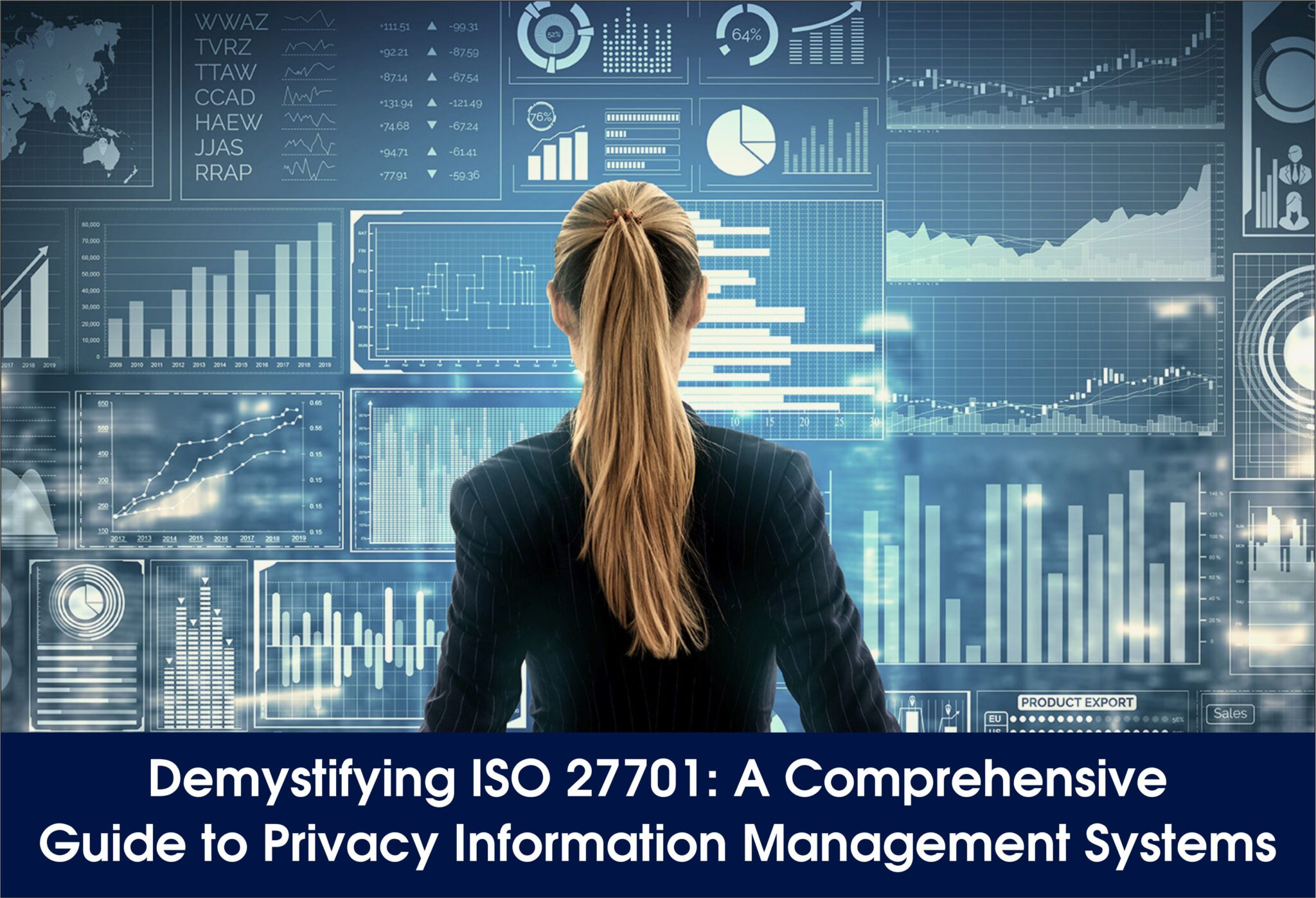In today’s digital age, the protection of personal data has become a paramount concern for individuals and organizations alike. With the increasing reliance on technology and the vast amounts of data being collected, it is crucial to have robust systems to ensure this information’s privacy and security. This is where Privacy Information Management Systems (PIMS) come into play. PIMS refers to a set of processes, policies, and procedures designed to manage and protect personal data in compliance with relevant regulations such as ISO 27701 Standard.
ISO 27701:2019 is an international standard that provides guidelines for establishing, implementing, maintaining, and continually improving a PIMS. It helps organizations identify potential risks related to privacy breaches and outlines measures to mitigate these risks effectively.
Implementing a Privacy Information Management Systems (PIMS) enables organizations to take a proactive approach towards data protection. It helps them establish clear accountability for managing personal data throughout its lifecycle – from collection to processing, storage, transfer, and disposal.
By adopting a Privacy Information Management Systems (PIMS) framework, organizations can demonstrate their commitment towards protecting individual privacy rights. This enhances customer trust and ensures compliance with applicable data protection laws and regulations.
The Key Principles and Requirements of ISO 27701 ⮯
The Privacy Information Management System (PIMS), also known as ISO 27701, is an addition to ISO 27001 and ISO 27002 for privacy management within the context of the organisation. It offers a structure for creating, putting into practice, maintaining, and constantly enhancing a privacy information management system.
The key principles and requirements of ISO 27701 include :-
- Scope and Applicability: ISO 27701 is applicable to all types and sizes of organizations, including public and private corporations, governmental agencies, and not-for-profit organisations, can use ISO 27701.
- Risk Assessment: Organisations must regularly undertake risk assessments to evaluate and manage privacy risks.
- Privacy Policy: The standard mandates that businesses create a privacy policy that is in line with their legal obligations as well as their privacy goals.
- Roles and Responsibilities: Organisations must establish roles and responsibilities for managing privacy, including the selection of a person or group to be in charge of privacy.
- Data Subject Rights: Organisations must develop policies to address data subjects’ rights, such as access, correction, erasure, limitation of processing, and data portability.
- Consent Management: The standard mandates that organisations handle data subject permission when it is required for data processing.
- Data Breach Notification: Organisations must have policies and processes in place to identify, disclose, and look into breaches of personal data.
- Training and Awareness: Organisations have to educate staff members and other relevant parties about privacy and data protection, as well as increase their knowledge of these concerns.
- Continuous Improvement: The standard encourages the Privacy Information Management System to be improved over time.
- Third-Party Management: The organisation must implement the necessary safeguards to secure personal data if it distributes it to outside parties.
Implementing ISO 27701 can offer several benefits to organizations ⮯
- Enhanced Privacy Management: Organisations may strengthen their privacy management by using ISO 27701 to build and enhance personal information management procedures. In addition to helping businesses comply with regulations, this may increase consumer happiness and confidence.
- Regulatory Compliance: There are stringent laws in many jurisdictions governing data privacy, such as the General Data Protection Regulation (GDPR) in the EU. Organisations can show compliance with these rules by putting ISO 27701 into practise, possibly avoiding fines and penalties.
- Risk Management: Organisations can stop or lessen possible breaches of personal information by detecting and managing privacy issues. They may avoid losing money and harming their reputation by doing this.
- Competitive Advantage: Organisations that have ISO 27701 accreditation might set themselves apart from rivals. They may benefit from this in markets where privacy is a major concern.
- Improved Business Relationships: Organisations may reassure their clients, stakeholders, and business partners about their commitment to privacy by implementing ISO 27701. This can strengthen commercial links and provide new possibilities.
- Global Recognition: Global acceptance of ISO standards. As a result, obtaining ISO 27701 certification may improve an organization’s reputation abroad.
- Continual Improvement: The constant improvement philosophy of ISO 27701 is shared by other ISO standards. As a result, businesses are urged to examine and enhance their privacy management on a regular basis, which can boost productivity.
- Cost Savings: ISO 27701 may help organisations avoid the costs of data breaches, such as penalties, remediation work, and lost revenue, by assisting in their prevention.
Challenges and Common Pitfalls in Implementing ISO 27701 ⮯
Implementing ISO 27701, the international standard for privacy information management systems (PIMS), can be a complex and challenging process. However, understanding and addressing the common pitfalls can help organizations navigate this implementation journey successfully.
One of the key challenges in implementing ISO 27701 is data mapping. Organizations often struggle with identifying and mapping all the personal data they collect, process, and store. This challenge arises due to the sheer volume of data, varied data sources, and lack of standardized processes. However, by investing time and resources into thorough data mapping exercises, organizations can gain better visibility into their data landscape and ensure compliance with privacy regulations.
Another common pitfall is the lack of employee training and awareness programs. Implementing ISO 27701 requires a collective effort from all employees to understand their roles in protecting personal information. Without proper training and awareness programs in place, employees may not fully grasp their responsibilities or understand how to handle personal data securely. By providing comprehensive training programs that cover privacy principles, best practices, and incident response protocols, organizations can foster a culture of privacy-consciousness among their workforce.
Integrating PIMS with existing systems is yet another challenge faced during implementation. Many organizations already have established systems for managing information security or quality management. Integrating these existing systems with ISO 27701’s requirements may require careful planning and coordination across different departments or teams within an organization. It is crucial to ensure that PIMS aligns seamlessly with other management systems to avoid duplication of efforts or conflicting processes.
While implementing ISO 27701 may present challenges such as data mapping complexities, employee training needs, and system integration issues; these hurdles can be overcome through proactive measures. By dedicating resources towards effective data mapping exercises, implementing robust employee training programs, and carefully integrating PIMS with existing systems; organizations can successfully implement ISO 27701 while safeguarding personal information effectively.
Conclusion ✅
The business owner can reduce the chances of health hazards by adhering to well-specified procedures. Compliance with the rules is a must for businesses to maintain a sterling and reliable reputation. It assists companies in avoiding legal issues and accusations of food safety and regulatory violations.
The company may stay clear of errors by using a flawless food safety management system. The effective implementation of a food safety management system makes it simple to avoid making poor purchasing selections, faults with budget management, contamination management systems, and other general errors.



